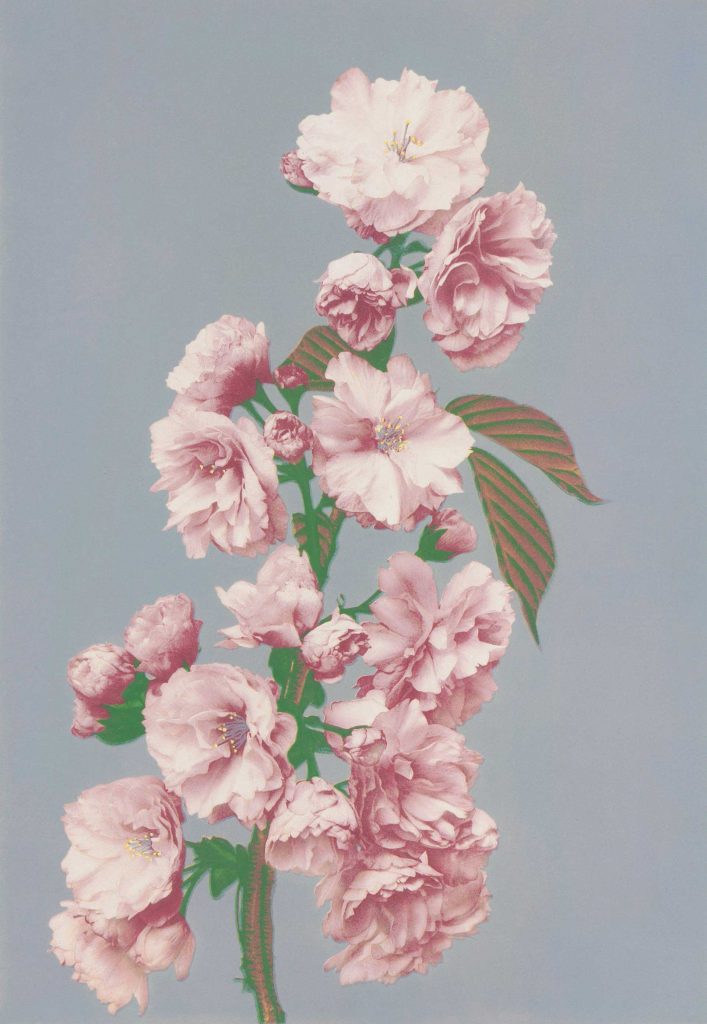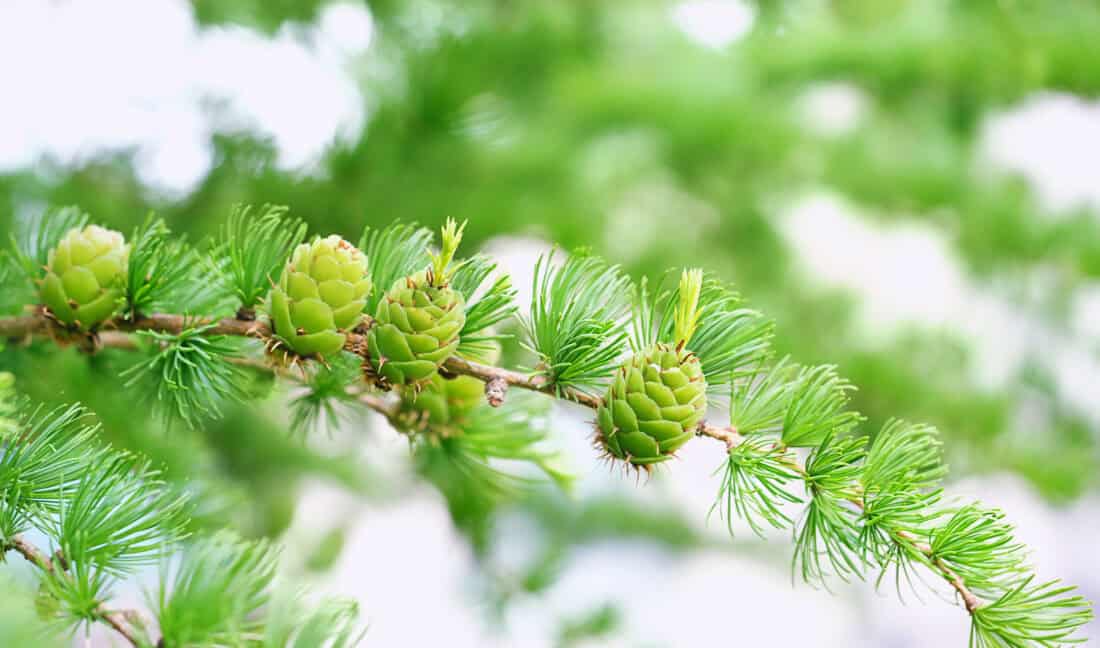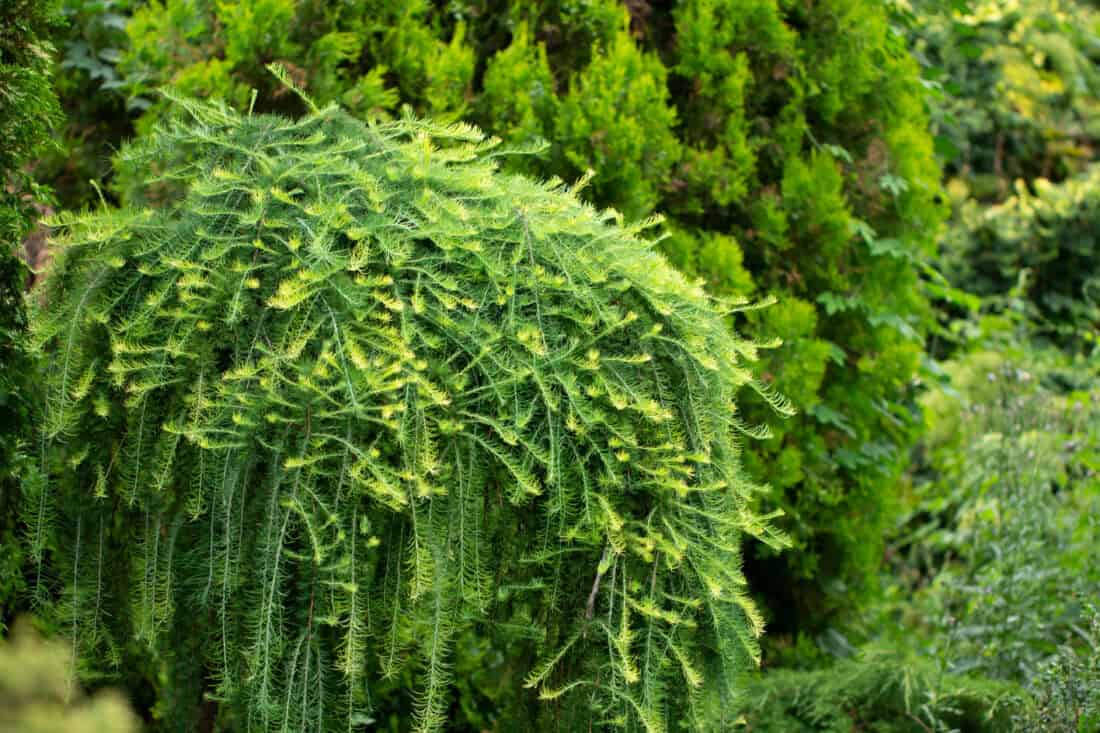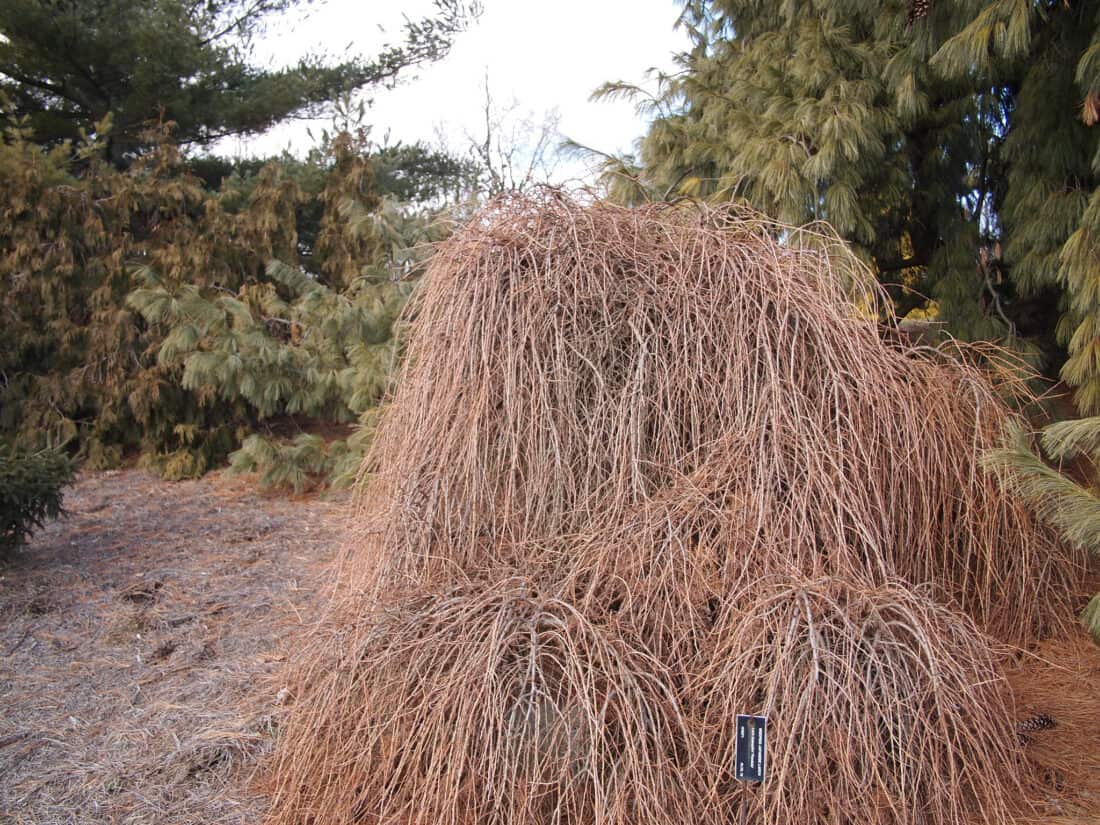I fell in love with Larix years ago when I came across a stunner of a specimen in a client’s garden. It was huge and, understandably, just about the only thing they wanted to keep in their landscape. I never felt particularly compelled to have one of my own (probably because I have so many other pines surrounding my house) until I was stopped in my tracks by this picture of a Larix decidua ‘Pendula’:

Larix Pendula
A weeping larch tree (Larix pendula) stands against a house – looking almost like a climber and a weeper and a lush fountain of needles all at once.
Image by Jenn Pedersen
At first, I assumed that it was some sort of weeping vine (is that even a thing?) – but after closer inspection, I realized it was actually a tree growing against this house. A Weeping Larch tree.

White Irises
Ogawa Kazumasa
Cherry Blossom
Ogawa Kazumasa

Larix is a curious plant – it looks like an evergreen – but it is actually a deciduous conifer. So, in the fall, all those needle-like leaves will turn from their in-season green foliage to a brilliant yellow before shedding for the winter.
Larch trees are prized for their strongly weeping habit (these don’t make a dome of weeping branches – they are more like a giant drip – more like just hanging straight down so that they have an interesting dimension. Their narrowness makes them a useful ornamental tree for tight spot. They can also be cultivated to be an unusually small accent shrub.
The Native North American Larix and the International Varieties
Larch trees are native to many parts of the world – Europe, Japan and North America. The American larch (or common name tamarack) is a large specimen tree that grows in Canada, around the Great Lakes, and west into most New England states. (it is not native to Rhode Island or Eastern MA, CT and NH). The north americna variety is larix Laricina
The ornamental weeping form of Larix is created by grafting, and there are weeping varieties of cultivars of the European larch (for example, Larix decidua ‘Puli’) and Japanese versions (Larix kaempferi ‘Pendula’).
Most North American gardeners can grow this unique deciduous tree since they are hardy from USDA zone 2-8.



Larix decidua Pendula (Weeping Larch) is my newest plant obsession. I have the perfect place for it and just like in the picture, I plan to put it right near my house, so that it can be kinda like a climber (at least in look) and kinda like a tree. I kinda like that idea.

ornamental trees
female flowers
relatively low maintenance tree
rough gray bark
moist soil
Larix decidua Pendula (Weeping Larch) is my newest plant obsession. I have the perfect place for it and just like in the picture, I plan to put it right near my house, so that it can be kinda like a climber (at least in look) and kinda like a tree. I kinda like that idea.
And you want to know the best part of this plant? It looks turns a beautiful yellow in the fall.
Are you crushing on anything interesting?
image by jenn pedersen
this collection of design are super and very nice post. new design are very good. all collections are pretty good..and all the best for your future designs..
Why not use this tree as a marker for your cat? It would be beautiful, and certainly visible if the snow gets deep.
Wavecrest Nursery in Fennville, MI grows huge specimens of this (at least they used to). I believe they have the original patent on the plant. It would definitely be cool growing up against a house–I like that idea.
If you use it extensively plan on getting calls from anxious clients thinking the plant is dead after it drops its needles. haha
I went to Lotusland in Santa Barbara this summer and they had climbing bamboo, chusquea coronalis that was tied up almost looking like weeping willows. They were gorgeous and I totally want them!
Nice! I’ve gotta have this plant in my garden!